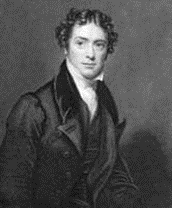Michael Faraday
1791-1867
The son of a poor and very religious family, he received little formal education. He was apprenticed to a bookbindery in London, however, and read many of the books brought there for binding, including the “electricity” section of the Encyclopaedia Britannica and Jane Marcet’s Conversations on Chemistry. He joined the Sandemanian or Glassite Church upon marriage to Sarah Barnard, in1821. Faraday is most famous for his contributions to the understanding of electricity and electrochemistry. In this work he was driven by his belief in the uniformity of nature and the interconvertibility of various forces, which he conceived early on as fields of force. In 1821 he succeeded in producing mechanical motion by means of a permanent magnet and an electric current—an ancestor of the electric motor. Ten years later he converted magnetic force into electrical force, thus inventing the world’s first electrical generator. In the course of proving that electricities produced by various means are identical, Faraday discovered the two laws of electrolysis: the amount of chemical change or decomposition is exactly proportional to the quantity of electricity that passes in solution, and the amounts of different substances deposited or dissolved by the same quantity of electricity are proportional to their chemical equivalent weights. In 1833 he and the classicist William Whewell worked out a new nomenclature for electrochemical phenomena based on Greek words, which is more or less still in use today—ion, electrode, and so on. Faraday suffered a nervous breakdown in 1839 but eventually returned to his electromagnetic investigations, this time on the relationship between light and magnetism. Although Faraday was unable to express his theories in mathematical terms, his ideas formed the basis for the electromagnetic equations that James Clerk Maxwell developed in the 1850s and 1860s.
